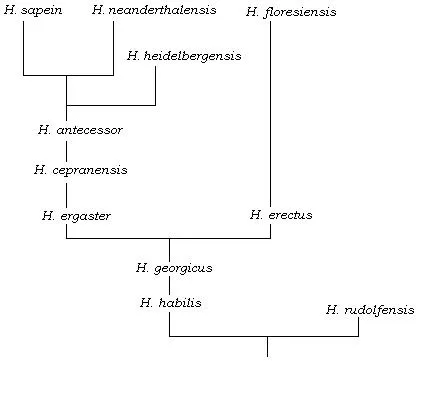Homo Sapiens’ Family Tree May Be Less Complicated Than We Thought
If this new research holds, we’re about to lose a whole pile of evolutionary ancestors
/https://tf-cmsv2-smithsonianmag-media.s3.amazonaws.com/filer/Human-evolution-470.jpg)
The history of human evolution isn’t a straight line from fish to monkey to human. You know that. The family tree of the genus Homo is full of diverging paths, with branches and dead ends. But new research, says Nature, could prune back some of those branches.
Many ancient Homo species are identified from a few samples—sometimes even a single one. All we have of some of our ancient evolutionary ancestors is skull and some teeth. At a site in Dmanisi, Georgia, though, researchers found a set of five skulls, presumably representing different individuals of the same species. The individuals were, obviously, individual. But the features in these skulls overlapped with the features of skulls representing different Homo species. That observation, say the researchers, led them to a controversial conclusion. Nature:
The wide variability in their features suggests that Homo habilis, Homo rudolfensis and Homo erectus, the species so far identified as existing worldwide in that era, might represent a single species.
…If the three hominin species inhabiting Earth about 1.8 million years ago were collapsed into one, H. habilis and H. ruldofensis would be subsumed into H. erectus — largely owing to the similarities of the Dmanisi skulls to those known for the latter species, says Zollikofer.
If the researchers’ idea sticks, it would reshape the Homo family tree. Here’s what that tree looks like right now:

Cutting of branches from this tree would change what we think about human evolution. Homo erectus, Homo habilis and Homo rudolfensis, as we think about them, were more cousins than grandparents. The new idea, says the BBC, would roll the three species into one that would have led to modern humans.
But that’s if this new idea holds up, and it’s already being questioned. Other scientists are saying that the technique that led to this conclusion wasn’t really the right tool to use. The various hominid species, erectus and habilis and rudolfensis, are differentiated by differences in the shapes and features of their skulls. The comparison used in the current research, says Fred Spoor to the BBC, didn’t highlight these important markers.
This isn’t the first time that paleontologists have tried to cut whole chunks out of the human family tree, says Darren Curnoe for the Conversation. It didn’t work those times; it’s not clear if it will this time, either.
More from Smithsonian.com:
Why Homo erectus Lived Like a Baboon
Multiple Species of Early Homo Lived in Africa
/https://tf-cmsv2-smithsonianmag-media.s3.amazonaws.com/accounts/headshot/smartnews-colin-schultz-240.jpg)
/https://tf-cmsv2-smithsonianmag-media.s3.amazonaws.com/accounts/headshot/smartnews-colin-schultz-240.jpg)